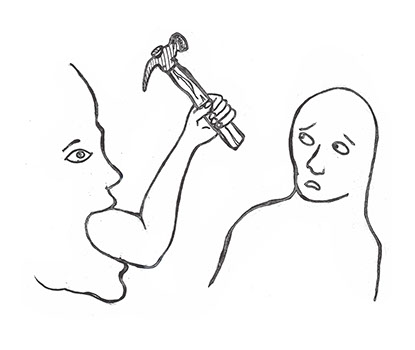THERE IS A MAGIC to displaying that you understand your Other’s feelings about the hard plight or good fortune they are experiencing. You’ll feel the cables of your bridge tighten securely, feel the canyon winds rushing past your unmoving monument of connection. And you will also notice that at times when you misunderstand each other, the cables will slacken and the supports beneath you will lurch forebodingly.
MANY OF US STRUGGLE with responding to our Others in ways that strengthen the integrity of our bridges. Often what flies from our mouths are judgments and criticism. Without thinking, we spill with opinions about the goodness, the rightness, the justness of the beliefs, people, or actions that our Other has described. Instead of working to see our Other’s point of view, we wind up hammering them with our own.

WHEN WE TELL our most vulnerable stories, it’s painful to have that story appraised skeptically rather than accepted as the view from our side of the canyon. Rather than offering critiques of the topics or opinions floating on the surface of a conversation we can instead learn to respond to a deeper layer of what our Other is sharing - the story and feeling underneath the conversation’s flow. This is empathy: using our own emotional experience to imagine our way into what our Other feels, attempting to see from their side of the canyon, and choosing to respond in a way that demonstrates our understanding.

Once we truly understand where someone is coming from, the feelings they are experiencing, the particular story they are telling themselves, then we are in a position to share with them how our perspective differs. If we have something we want to challenge in our Other’s story, a detail that seems important to correct or a dangerous road that we want to warn them to avoid, they will be much more receptive to our point of view when we have generously received theirs.